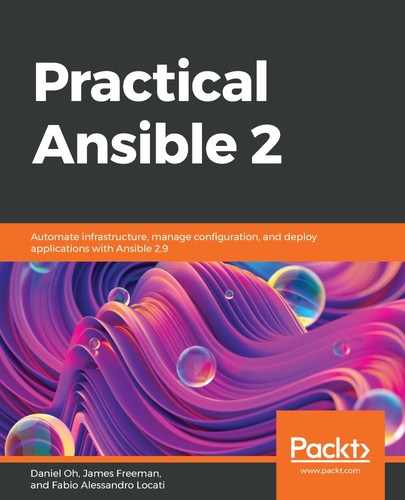So far in this book, we have worked mostly with ad hoc Ansible commands for simplicity and to help you to understand the fundamentals. However, the lifeblood of Ansible is most certainly the playbook, which is a logical organization of tasks (think ad hoc commands) in a structure that creates a useful outcome. This might be to deploy a web server on a newly built virtual machine, or it might be to apply a security policy. It might even handle the whole build process for a virtual machine! The possibilities are endless. Ansible playbooks, as we have already covered, are designed to be simple to write and easy to read—they are intended to be self-documenting and, as such, will form a valuable part of your IT processes.
In this chapter, we will explore playbooks in greater depth, from the basics of their creation to more advanced concepts such as running tasks in loops and blocks, performing conditional logic, and—perhaps one of the most important concepts for playbook organization and code re-use—Ansible roles. We will cover roles in more detail later, but please know that this is something you will want to use as much as possible when creating manageable playbook code.
Specifically, in this chapter, we will cover the following topics:
- Understanding the playbook framework
- Understanding roles—the playbook organizer
- Using conditions in your code
- Repeating tasks with loops
- Grouping tasks using blocks
- Configuring play execution via strategies
- Using ansible-pull
